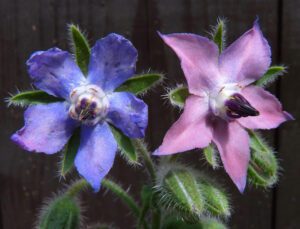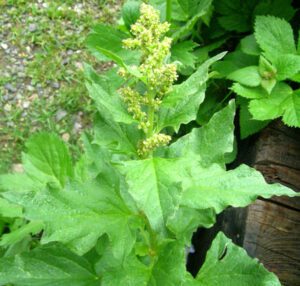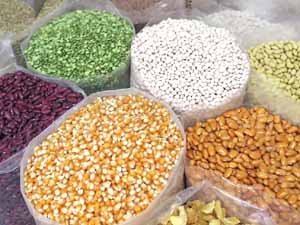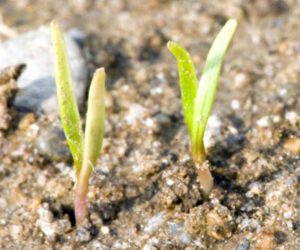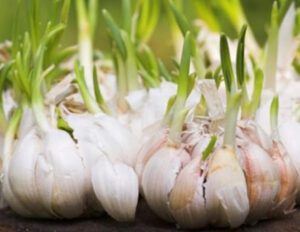Growing beans organically in your home garden may seem challenging, but it’s actually very easy and simple.
If you know the basic requirements for growing beans then you will definitely be able to grow some fresh beans from your garden.
Beans are actually a tender vegetable and also a great addition to any home garden. Here we are going to discuss about ‘how to grow beans organically for family use’.
How to Start Growing Beans
Growing beans is actually very easy and simple. Although you need to follow some step by step guide and take good care of the plants for having good yield. The common steps for growing beans are mentioned below.
Choose a Variety of Bean
There are many different varieties of beans available. The world genebanks are currently holding about 40,000 different bean varieties. But among these bean varieties only a few varieties are grown for regular consumption.
In terms of growing style, there are two types of beans available namely bush beans and pole beans. The pole bean varieties will vine and need to be grown up stakes or trellises.
On the other hand the bush beans tend to grow more compactly and generally do not require support. Among these two types of beans, growing bush beans is much easier and actually require less care and maintenance.
But the pole beans are very hardy, disease resistant and generally produce more beans. Both pole and bush types have many different varieties.
However, the mostly cultivated bean varieties are Lablab, Yardlong, Runner, Lima, Pinto, Black, Green, Butter, Yellow, Soybeans, Peas, Black-eyed etc.
Choose the variety that you like most. You can also consult with your friends or relatives for deciding which variety will be good for you.
Collect/Purchase Seeds
Collect or purchase seeds after selecting the right variety. You can easily purchase seeds from any of your nearest seed stores or you can also order online.
By the way, if you have any relatives or friends who are growing beans, then you can collect some seeds from them.
Time for Growing Beans
Most of the beans are a summer crop and they need warm temperatures for growing. Depending on the variety, beans will take between 55 and 60 days from planting to harvesting (although there are some early and late varieties available).
In the northern cooler areas, the beans should not be planted until all danger of frost has passed (generally about a week after the last frost in spring).

Preparing the Soil
Growing beans is possible in almost all types of soil. But most of the bean varieties grow well in loamy or sandy loamy soil. Your plants will grow well and be healthy if the soil is enriched with organic materials.
So before planting, prepare the soil by adding as much organic materials as you can.
Prepare the soil by adding manure and compost prior to planting the seeds. Adding compost and manure will also help to improve the soil if you have clay problem.
Planting Beans
You can choose any location in your garden for growing beans. You should plant the seeds depending on your personal preference, landscape needs and most importantly the type of beans.
It’s not recommended ‘starting the seeds indoor’. Because most of the bean varieties may not survive transplanting.
Growing Pole Beans
As we have mentioned above, the pole beans will vine and need to be grown up stakes or trellises. The pole bean varieties require staking with supports and you can use bamboo, fence, trellis, loader or string for this purpose.
Corn or sunflower stalks can also be used for bean supports. And you can also use any trees in your garden. So before planting pole bean varieties, ensure that you have the support ready for the bean plants to climb on.
Growing pole beans has the advantages of maximizing the uses of your available space.
Growing Bush Beans
Bush bean varieties are actually much easier to grow than the pole bean varieties. Bush bean varieties require less care and maintenance for growing and generally don’t require any support (they are bushy plants close to the ground).
Bush bean varieties produce early crop. For planting in rows, keep 1.5-2 ft space between two rows and around 0.5-1 ft space between two plants.
Whichever variety you choose, soak the seeds in clean water for 24 hours before sowing. Doing this will helps in faster germination.
Caring for the Bean Plants
Taking good care of the plants is very important for growing beans and getting good yield. Spending some time in the garden regularly will be enough for caring bean plants.
Feeding/Fertilizing
Soil with normal fertility will be good for growing beans. Beans will grow well if you follow the rule mentioned above for preparing soil.
Additional fertilizer is only needed where levels are low and when the plant start flowering. Always try to use organic fertilizers (compost, manure etc).
Watering
Adequate moisture in the soil is a must for growing beans. So you need to water the plants on a regular basis. Water the plants at least once a week or more frequently during dry weather.
Mulching
Mulching helps to retain moisture in the soil. You should always use organic materials for mulching such as grass clippings, composted leaves, straw etc. Mulching also helps to control weeds.
Pruning
Pruning is not a mandatory for beans. But you can cut the top of the plant when there are several true leaves. Doing this will encourage the plant to grow new vines.
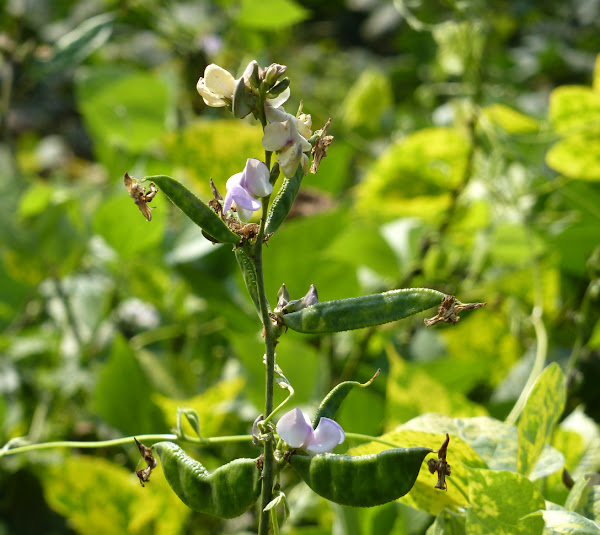
Weed Controlling
Mulching will help to control most of the weeds from your garden. But if you even notice any weeds then control manually. Don’t use any weed controlling chemicals.
Controlling Pets & Diseases
Some common pests of the beans are aphids, Japanese beetles, Mexican bean beetles etc. You can control these pets by hand as soon as you see them.
You can also use organic homemade pesticides for controlling pets (some mostly used organic materials for preparing organic pesticides are garlic, onions, chili, soap, neem oil, baking soda, diatomaceous earth etc.).
Beans are also susceptible to some disease. Some common diseases of beans and their treatment are mentioned below.
Mosaic Virus
Nutrient deficiencies, uses of herbicide or infections are the common factors that cause mosaic viruses.
If you notice unusual colored splotches on your plants, then probably they have this disease. Discarding the plants is the only real way to beat this disease.
Powdery Mildew
As the name suggests, the powdery mildew is actually a white powdery film that develops on the bean plants.
This disease spreads through rain and wind. Avoid overhead watering for preventing this disease and plant high-quality seeds. Using fungicide will also help to beat this disease.
Stem Anthracnose
The stem anthracnose disease is actually a fungus. Common symptoms of this disease is ‘dark colored spots on the beans’. Avoid overhead watering for preventing this disease.
Bean Rust
Bean rust is also a fungus. Your plants are affected by this disease if you notice rust colored spots on the leaves. Crop rotating is a great way for treating this disease. Discard the plants for avoiding spread of this disease.
Contact any specialist or any experienced farmer in your area if you notice any other problems in your bean plants. And take necessary steps as soon as possible.
Harvesting Beans
Beans can be harvested after 55-60 days from planting seeds. And you can start harvesting beans generally after 20-25 days of start flowering.
You can pick either immature or mature beans depending on what types you want to eat. Mostly the beans are picked at an immature stage (when the seeds inside have not yet fully developed).
You can leave some beans in the plants for using as seeds for the next growing season. Best of luck!

